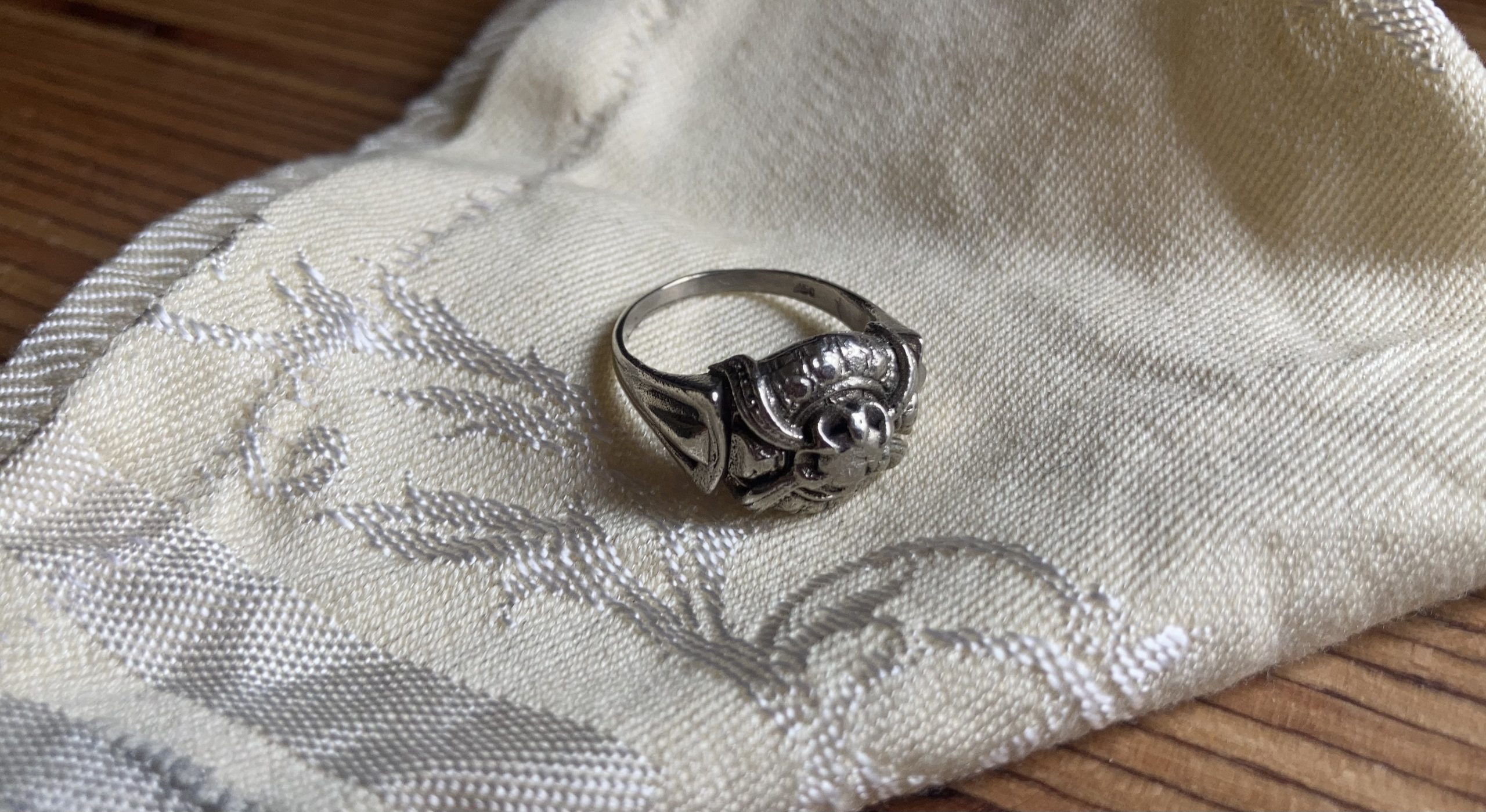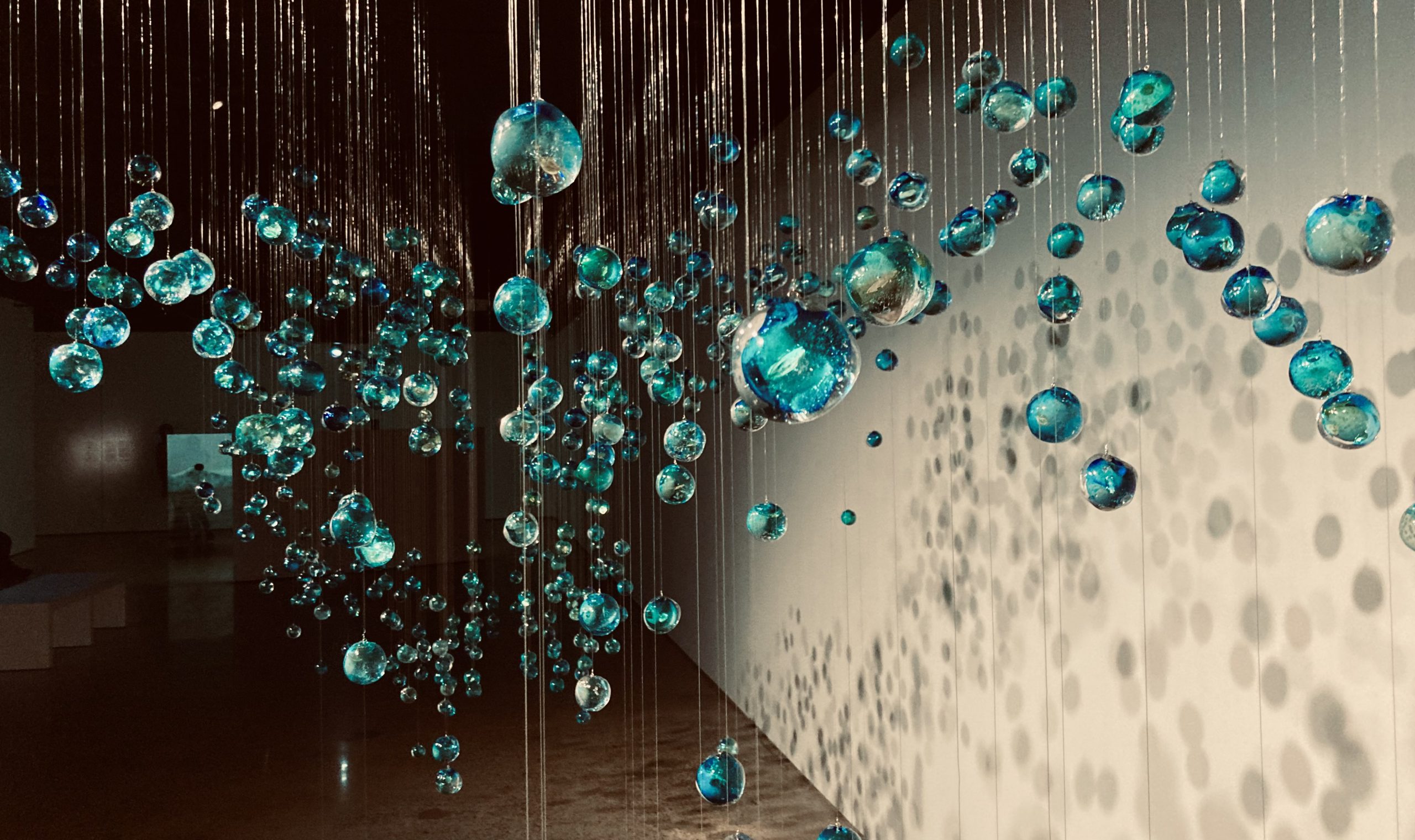Mural by Jordan Bennett

Colourful mural by Jordan Bennett.

Street Scultpure off St. Laurent blvd. by Spanish artist Isaac Cordal.

Photo of One-Way Colour Tunnel by Olafur Eliasson from the SF MoMA.

A cute little piece of design. This is a self-propelled phonograph, which runs on tracks embedded with music, by Japanese artist Yuri Suzuki. Taken at the SF Moma Art of Noise exhibit.
Here is a new Montréal-only mailing list I have high hopes for. Community Service chronicles upcoming art and design events in the city. I’m happy to have a non-social-media-based way of getting news about art events.

I make a point on this blog of never worrying about my posts being ‘timely’. I post whenever I find something, and don’t much care if something is 2 days or 2 decades old (I also don’t track visits or incoming links in any way, but that’s another story). Sometimes, though, I luck into something relatively current, like my visiting artist Jenny Holzer‘s Lightline show at the Guggenheim on its 4th day.
The main attraction was the immense video screen that sent scraps of words flowing up the helix of the Guggenheim’s inner hall, in a reworking of the artist’s own 1989 show in the same space.
Skywriting was done outside the show, though I don’t know if it was related to the words inside. The shape echoes the work, though I don’t know who Alejandro is, and couldn’t angle myself to read more than this small excerpt.

And lastly, a bit of a spoiler, the very final words at the top of the Guggenheim:


This whimsical installation was made by American artist Toshiko Takaezu, who realized that she could dry her pottery on hammocks without distorting their shape. Seen at The Noguchi Museum in Astoria Queens.

I’m planning a solo trip to Nee York City this week, and on my list of activities is visiting the Brooklyn-based museum dedicated to Japanese-American artist Isamu Noguchi. As well as being an artist and designer (he designed this iconic coffee table) Noguchi was a frequent collaborator with Buckminster Fuller, who has appeared on this blog numerous times. Noguchi worked on the Dymaxion Car, which was Fuller’s somewhat ill-fated concept car which never saw wide production.
Pictured here is a fountain from Noguchi’s Expo 70′ installation. Photos via Noguchi’s archive.


I recently got to take part in a very small art performance for a single person, me. Montréal/Rome based artist Sarah Zakaib met with me in a coffee shop, told me stories of her extended family, and gifted me with a casting of a ring that one of her family members had smuggled out of Italy during World War II. It was an art performance for a single person. It was touching, personal, and refreshingly small. The other people in the coffee shop had no idea that anything unusual was happening at all.

A closeup of Anahita Norouzi‘s artwork Constellational Diasporas from the Montréal’s Musée d’art contemporain. Each glass orb contains an invasive Persian Hogweed seed, which is an invasive species here in Quebec.